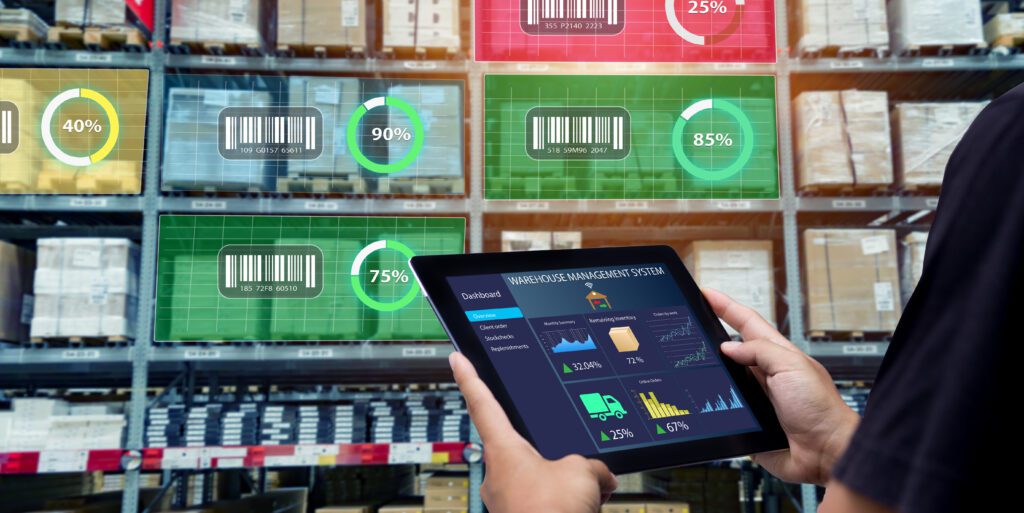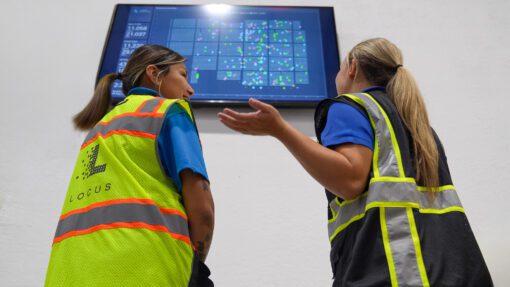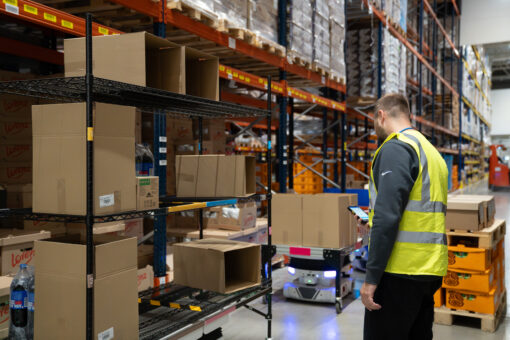WP: How to achieve 400 UPH with Locus Fast Pick
WP: How to achieve 400 UPH with Locus Fast Pick Download Now!
2025 Warehouse Automation and Robotics Trends
Mary Hart, Sr. Content Marketing Manager

As I look at the interviews I’ve conducted for the Warehouse Automation Matters podcast over the past months, it’s clear that the warehouse automation landscape is constantly evolving and changing. Across multiple episodes, my guests — industry leaders at the forefront of warehouse automation — shared valuable insights into the latest trends shaping the future. These conversations highlight emerging technologies, operational shifts, and how businesses are preparing for the future. Here are the key trends you can expect to see in warehouse automation by 2025.
1.Collaborative Robotics Will Be the Norm
The dream of "lights-out" or fully automated warehouses has shifted in recent years. Companies are now focusing more on collaborative robots (cobots) that work alongside human associates to enhance productivity and reduce physical strain. These robots are playing a critical role in balancing automation and human input, providing efficiency without displacing human associates.
As Kevin Lawton, host of The New Warehouse, noted, “When I started the podcast in 2019, there was a ton of talk about fully automated, lights-out warehouses. But over time, that conversation has shifted toward collaborative robotics — enabling workers to do more with less.”
Looking ahead to 2025, it’s clear that this trend will only accelerate. As more companies like Fleet Feet implement robots such as Locus Robotics’ AMRs, they’re not only boosting productivity but creating a better working environment for their employees. As Anthony Pendola, Senior Manager of Distribution at Fleet Feet, noted, “We’ve doubled our productivity with fewer people because the robots assist our team members, reducing the physical workload and improving morale. Our associates are going home less tired, and we’ve seen a big boost in efficiency.”
This shift toward human-robot collaboration signals that the future of automation is not about fully replacing human workers but empowering them with smart technology. By 2025, collaborative robotics will be an integral part of warehouses across industries, streamlining processes and improving employee satisfaction.
2. Peak Demand Requires Scalable Automation Solutions
Handling the intense spikes in volume during peak seasons remains a challenge for many companies. By 2025, even more warehouses will rely on flexible, scalable automation solutions to address these fluctuations in demand without the need for permanent infrastructure changes.
Thomas Stearman, Director of Industrial Engineering at UPS, explained how their approach has evolved and how flexible robotics is and will be central to their strategy: “During peak times, we need a solution that can ramp up capacity quickly. AMRs allow us to bring in extra units when we need them and then scale back when things slow down. This flexibility helps us handle peaks without needing to maintain a large workforce year-round.”
The future of automation lies in this kind of flexibility. With the rise of e-commerce and the unpredictability of consumer demand, scalable robotic solutions will enable businesses to maintain agility. By 2025, companies will no longer rely solely on temporary labor or massive infrastructure investments to manage seasonal surges. Instead, automation will offer a flexible solution that allows warehouses to adapt in real time.
3.AI Will Revolutionize Warehouse Optimization
Artificial Intelligence (AI) is set to play an increasingly critical role in warehouse optimization. AI helps warehouses process large datasets and make better decisions regarding inventory management, slotting, and labor allocation.
In discussing the role of AI, Stearman explained how UPS has already begun leveraging AI in combination with their warehouse management system (WMS) to streamline operations: “We’ve been working with our WMS partner to batch orders in ways that reduce travel time for pickers and improve accuracy. With AI slotting, we’ve improved our order accuracy and efficiency, which is particularly critical during peak seasons when volume is high.”
By 2025, we can expect AI to become the backbone of decision-making in warehouses. AI systems will not only optimize pick paths but also anticipate demand surges, predict staffing needs, and automate resource allocation. This will allow warehouses to operate at peak efficiency year-round, reducing the reliance on manual oversight and streamlining every stage of the fulfillment process.
4.Sustainability Will Drive Warehouse Automation Initiatives
Sustainability is no longer just a side consideration for warehouses. In 2025, it will be a central component of automation strategies, as companies strive to reduce their environmental impact while maintaining operational efficiency.
Thomas Stearman of UPS emphasized the role sustainability plays in their automation initiatives: “We’ve implemented systems like Packsize, which allow us to right-size packaging for each order, significantly reducing waste. By reducing the amount of material we use, we’re not only cutting costs but also contributing to our sustainability goals,” he explained.
As sustainability becomes a larger focus for both consumers and companies, technologies that reduce waste, energy consumption, and resource use will be essential. By 2025, automation solutions will increasingly focus on reducing the carbon footprint of warehouse operations. From energy-efficient robots to AI-optimized packing systems that minimize material use, sustainability will drive decisions about which technologies companies choose to implement.
5.The Future of Warehouse Robotics: Expanding Beyond Picking
One of the most exciting future developments in warehouse automation is the ability for robots to take on more complex tasks — such as putaway, inventory management, and even more dexterous tasks that traditionally required human intervention.
At Fleet Feet, Pendola mentioned that they are already exploring ways to expand their use of robotics beyond picking: “Right now, we’re using Locus primarily for picking, but we see a future where they’ll handle more workflows including putaway”.
By 2025, robots will likely be performing a wider variety of tasks, allowing human associates to focus on higher-level, strategic activities. The future of warehouse robotics will be defined not only by efficiency gains but also by the diversity of tasks that robots can perform, making them an even more integral part of warehouse operations.
The Automated Warehouse of 2025 and Beyond
By 2025, warehouse automation will be about more than just speed and efficiency — it will prioritize flexibility, human-robot collaboration, sustainability, and the well-being of human workers. The leaders I’ve interviewed have shared how technologies like collaborative robots, AI-driven optimization, and scalable solutions are already reshaping their operations and helping them adapt to an unpredictable future.
Looking ahead, it’s clear that automation is revolutionizing not only how warehouses operate but also how employees engage with their work. Whether it’s through improving ergonomics or enabling workers to take on more meaningful tasks, the future of warehouse automation is bright and full of opportunity.
For more in-depth insights into these trends and to hear firsthand accounts from industry leaders, tune into the Warehouse Automation Matters podcast, where we continue to explore how automation is transforming logistics. Let’s keep moving what matters!




